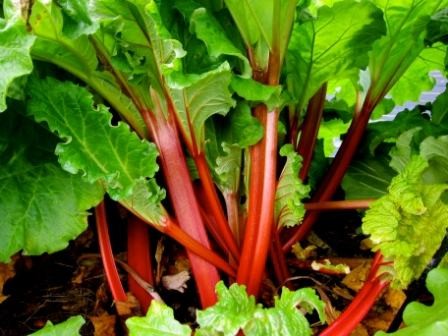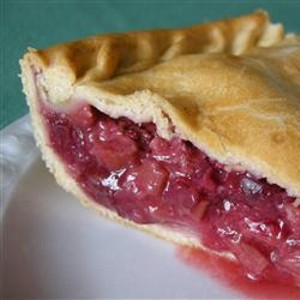You either love it or hate it. And I’m not talking about Black Olives or Anchovies on your Pizza. It’s that great British tradition, Rhubarb. And there are as many misconceptions out there about this sour treat as there are ways to use it. I say, it’s time to clear the air so we can all enjoy it!
 First off, is it a Fruit or a Veggie?
First off, is it a Fruit or a Veggie?
It’s prepared in the same way as Fruits, and is often teamed with various sweet fruits in recipes – almost exclusively Desserts and Breakfast Spreads. But Rhubarb is really a Veggie, producing fibrous stalks reminiscent of Celery. Unlike Celery, however, Rhubarb’s fibres break down during cooking allowing easy eating and digestion.
It doesn’t help that Rhubarb is officially classified as a Fruit by the US Department Food and Drug Administration (USFDA). Don’t ask me why. It’s a government thing.
Why does it taste so sour?
Rhubarb contains fairly high amounts of malic and oxalic acids. Malic acid is the kind that makes Apples tart.
Is Rhubarb poisonous?
Not the stalks. But the leaves contain high levels of oxalic acid – a toxic compound that can cause kidney damage and even death. It would take approximately 10 lb. / 4.5 kg of Rhubarb leaves to kill you, but a much smaller ‘dose’ will still make you violently ill.
Can it be eaten raw?
Yes. But, as with all fresh Produce, wash it well first, and trim of the root ends and tops well into the red stalks. The stuff is very sour and doesn’t go down well by itself with some folks. I remember my dad taking the Sugar bowl from the breakfast table into the garden, pulling a fresh stalk of Rhubarb, trimming off the leaves and white root-ends, and dipping the juicy cut ends in the Sugar before each bite.
Is Rhubarb a laxative?
Yes and no. It’s not as effective as Senna (a well-known natural laxative). But its fibre content and the presence of a laxative compound called ‘sennoside A’ do qualify it as a gentle laxative.
Not just a pretty face
Rhubarb contains a number of valuable nutrients. A standard 3.5 oz. / 100 g serving provides 26 percent of the Recommended Daily Intake (RDI) of vitamin K, 15 percent of the RDI of Calcium, and 6 percent of the RDI of vitamin C. Rhubarb contains no Carbohydrates and just traces of Protein. However, it’s most often eaten cooked with a fair amount of Sugar to take the edge off its sour taste, which adds at least 100 Calories to the usual 100 g / 3.5 oz. serving.
What can you do with it?
Rhubarb is commonly used to make Jams, Purées and Pie Fillings (see photo top of page). Rhubarb Crumble is also a favourite Dessert. Just Google ‘Rhubarb recipes’ to marvel all the things folks have discovered that can be done with it! Hint: It’s often teamed with Fruits such as Strawberries, Blueberries and Apples in any dish you can make with them…
And that’s the skinny…
…On Rhubarb. Stop avoiding it, and start embracing it! Smile and express genuine thanks when the lady who always has too much knocks on your door to share…
~ Maggie J.

